
views
Washing Your Car
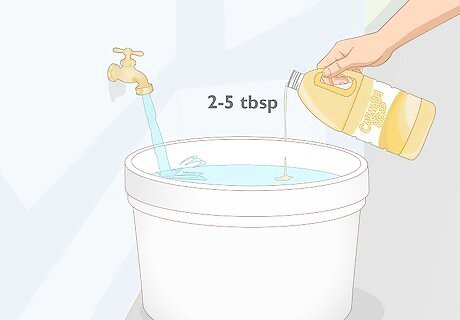
Fill a bucket with water and 2–5 tablespoons (30–74 mL) of soap. To wash your car, it is helpful to prepare a soapy mixture. Washing your car removes any loose dirt, dust, or mud. You should always use car washing soap or conditioner so you do not damage your paint. Squeeze a bit of soap into a bucket, and use a hose to fill it with water. If you are removing scratches, washing your car lifts up any excess dirt. This makes it easier to see all your scratches clearly.
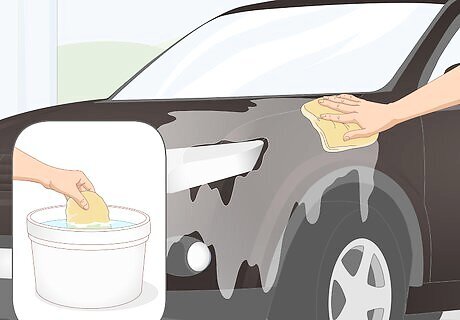
Dunk a clean rag into your bucket and wash your car. Submerge your rag so it is saturated in your soapy mix, and rub it over all of your car, starting at the top. Move your hand in a circular motion to lift up dirt and debris. Cover your car in soapy bubbles so it is completely clean! As you wipe your car down, dip the rag back into your bucket to use fresh soap mixture. If your water gets black and murky, replace it with a fresh batch of soap and water.

Rinse your car with your hose to remove any soap or bubbles. Hold your hose about 2–3 ft (0.61–0.91 m) away from your car, and let the water spray over the surfaces of your vehicle. Wash off the entirety of your car, so there is no remaining soap residue. You can park your car in a sunny spot so it dries quickly, if you'd like. Don't wait too long to rinse the car, or the soap might dry on the surface, leaving marks.
Repairing Any Paint Scratches
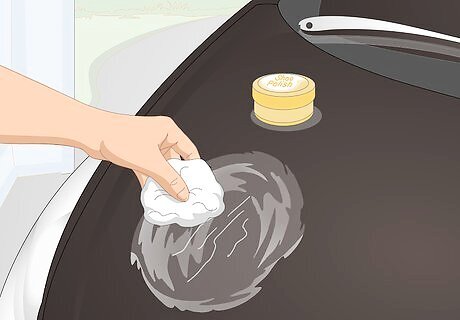
Apply shoe polish to your vehicle if you have any scratches in the paint. You cannot remove the scratch, but you can sand down the paint around it to make the scratch invisible. Take another clean rag, and wipe up 1 small dollop of shoe polish from its container. Shoe polish makes it easy to see the scratches, so you don’t sand too far beneath the scratch. Washing your car makes it easier to see any and all scratches on your car. Use black shoe polish if your car is a bright color. Use white shoe polish if you have a dark-colored car. If you don't have scratches on your vehicle, this is not necessary.

Sprinkle soap and water on your scratch to make it easier to sand. Dip a clean rag into your soapy water, and ring the rag out over top of your scratches. Adding a bit of water helps lubricate the area, making it easier to repair scratches in your paint. If your water is dirty, it is best to mix up fresh soap and water. That way, you do not add any additional scratches to your car.
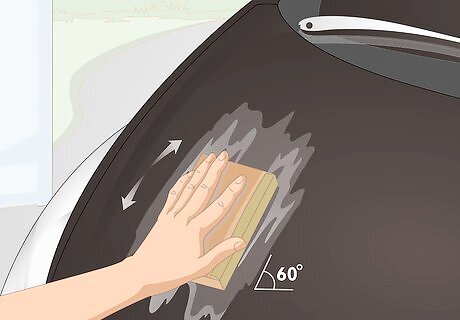
Use ultra-fine sandpaper and sand the scratch at a 60-degree angle. Place your sandpaper on a wooden block so you have a flat edge to sand with, and hold it in place. Tilt your sandpaper so it is at a 60-degree angle at your scratch, and use light strokes in a back-and-forth motion. Remember, you want to sand the paint around the scratch. Look for the mark of shoe polish, and sand directly next to it. For best results, use 2000-3000 grit wet/dry sandpaper. Do this if you are repairing paint scratches.

Dip the sandpaper in soapy water as you sand down the scratches. To make the process easier and quicker, it is helpful to lubricate your sandpaper with your soapy water. Dunk a piece of sandpaper into your bucket, then rewrap it around your wooden block. Sand back over your scratched areas until all of the shoe polish vanishes. You can sand down the paint initially with dry sandpaper, then wet your sandpaper to smoothen over the surface. This makes it easier to fix scratches. If you find any additional scratches on your car, sand over them at this time.
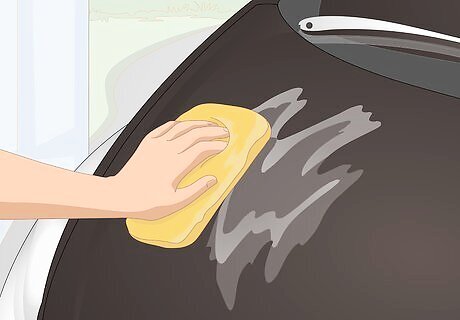
Wipe down your scratched areas with a damp cloth. After you’ve sanded over all of your scratches, turn on your hose, and run water over your rag. Rinse off any residual soap, and ring out your rag when finished. Then, use the rag to wipe away any paint debris or dust. You can move your hand in wide, circular motions over your entire car.
Applying the Rubbing Compound

Rent or buy an orbital polisher to apply the compound professionally. To most effectively apply your rubbing compound, you can rent or buy an orbital polisher from most home supply stores. When rubbing compound over the entire car, use a soft pad. On average, a polisher costs about $30 - 70 to buy new (£21.30 - 49.71). Dennis W. Parks Dennis W. Parks, Automotive Repair Expert Rubbing compounds contain mild abrasives that safely remove minor defects from automotive paint finishes without removing large amounts of clearcoat. Selecting the right grade of rubbing compound is critical — heavy-cut formulas rapidly remove deeper scratches but leave behind visible swirl marks if not properly finished, while fine-cut compounds provide a high-gloss finish.
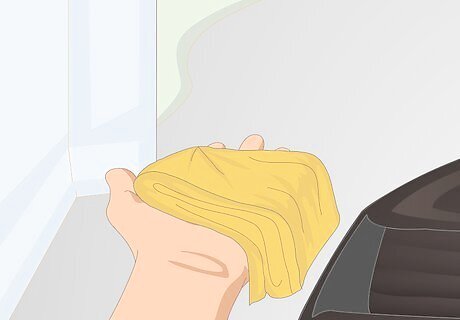
Use a clean, dry microfiber towel to apply your compound by hand. While orbital polishers do the best job of spreading the rubbing compound, you can also effectively use a towel. Make sure your towel is completely clean so you do not rub dirt and debris into your car. Do this if you don't have access to a polisher or want to remove scratches on a budget.
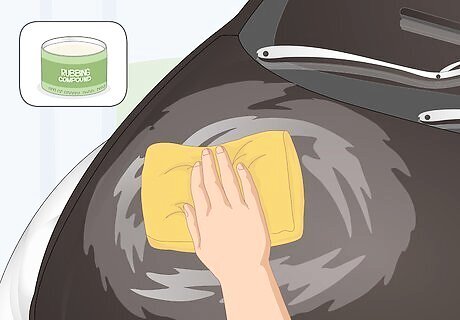
Apply a thin line of rubbing compound directly over your scratches. You want the scratched areas to be covered with rubbing compound. If your compound comes in a tube, you can squeeze it directly onto the scratches. If your rubbing compound does not come in a tube, you can scoop some out using a paper towel or rag. Rubbing compound helps smoothen over the freshly sanded areas, so your scratches look invisible. Make sure your car is not in any direct sunlight before you apply the compound.
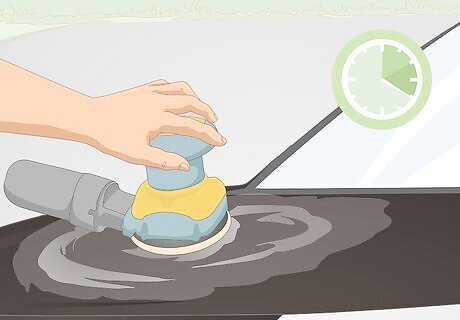
Hold your orbital polisher over your scratches for 10-20 seconds. Use a wool pad if you are using a polisher. Place your polisher directly onto the scratch, and pull the trigger or press the button to start the machine. The orbital polisher will rapidly spin across the surface of your car, spreading the rubbing compound over the scratches.
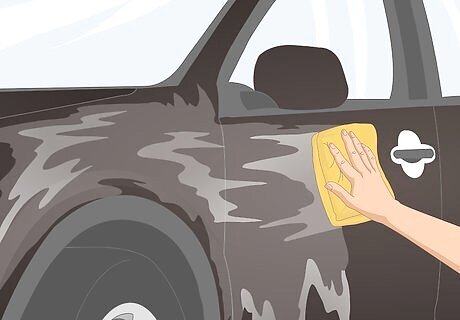
Use rubbing compound over all of your car to polish every surface. Apply about 1 teaspoon (4.9 mL) of compound to your cloth or polisher after you spread rubbing compound over the scratched areas. Start at the top of your car and apply the compound in 1–2 ft (0.30–0.61 m) sections. Move your hands or the buffer in a circular motion to apply the rubbing compound. In addition to removing scratches, rubbing compound freshens up the color of your car and makes it look sparkling and shiny. It essentially acts as a polisher for your car.
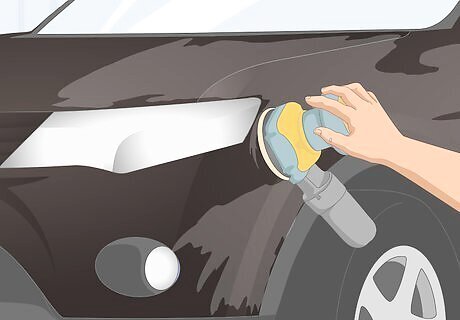
Rub the compound into the surface of your car until it is invisible. Move your orbital polisher or microfiber cloth in small circles until you rub in all of the compound. Press into the surface of your car with moderate force as you apply the compound. The compound is completely rubbed in when you cannot see any residue or streaks on your car. With moderate force, your rubbing compound should disappear in 1-2 minutes, on average. Check to make sure all spots are shiny and beautiful when you are finished. You can go back over any areas you missed at this time.
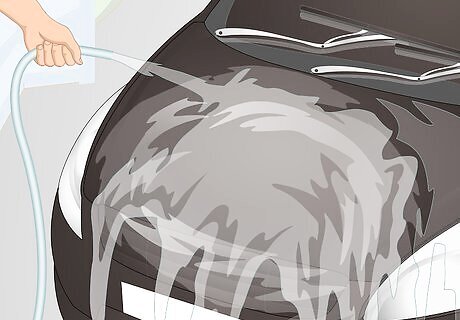
Rinse the car with water to get rid of any remaining rubbing compound. Stand with your hose about 3 feet (0.91 m) away from your car, so you can evenly spray water over your vehicle. This washes off residual compound and any dirt or dust that was lifted up. Once your car is rinsed, it is helpful to let your car dry thoroughly in the sun.




















Comments
0 comment